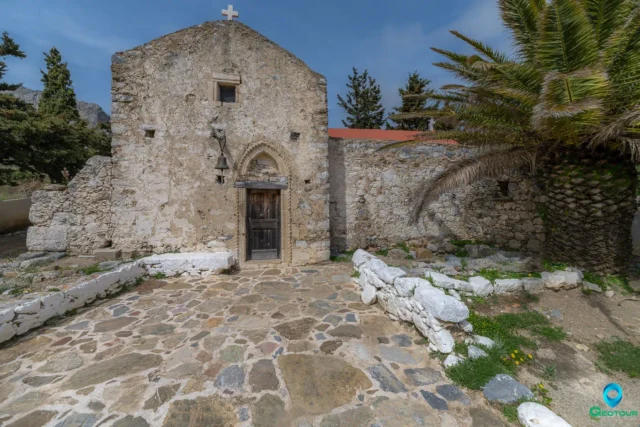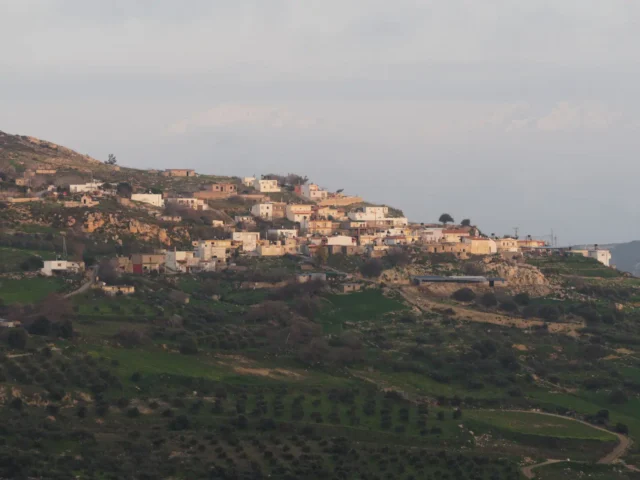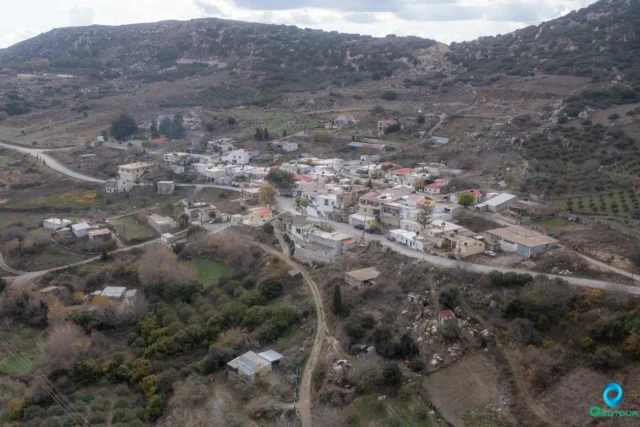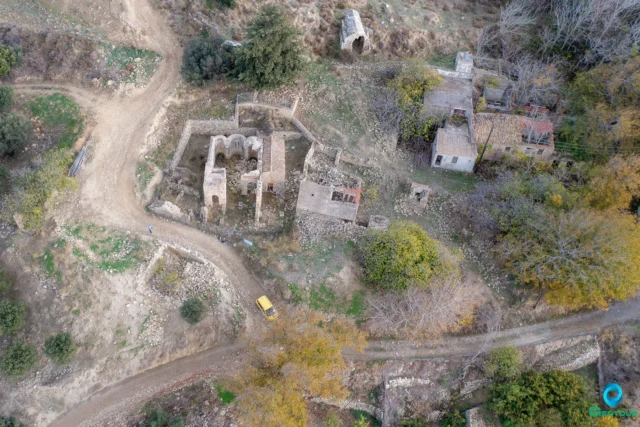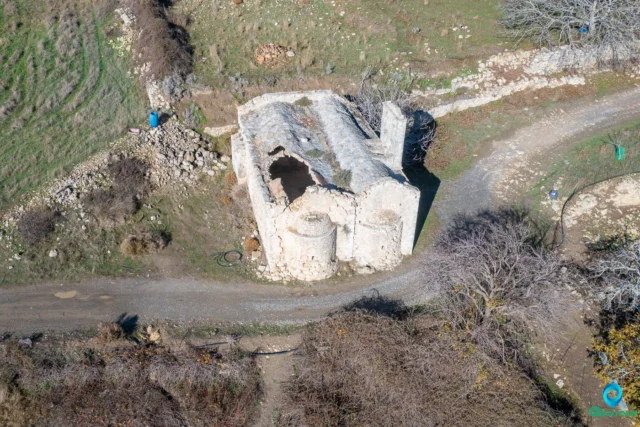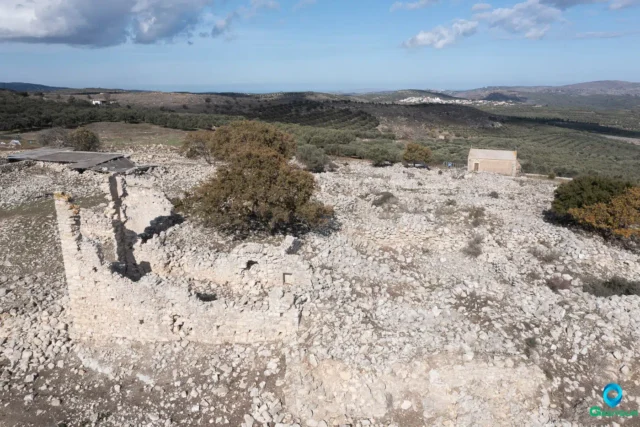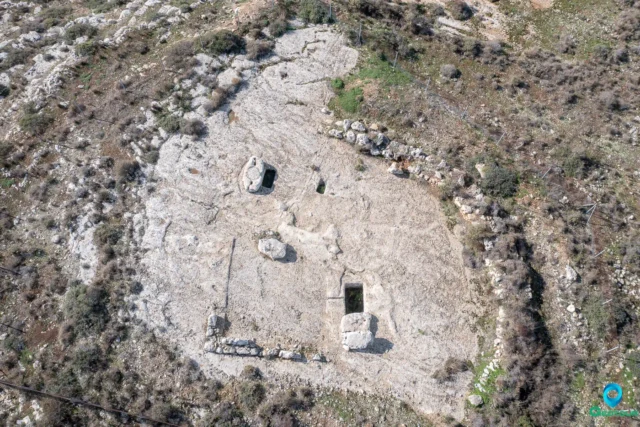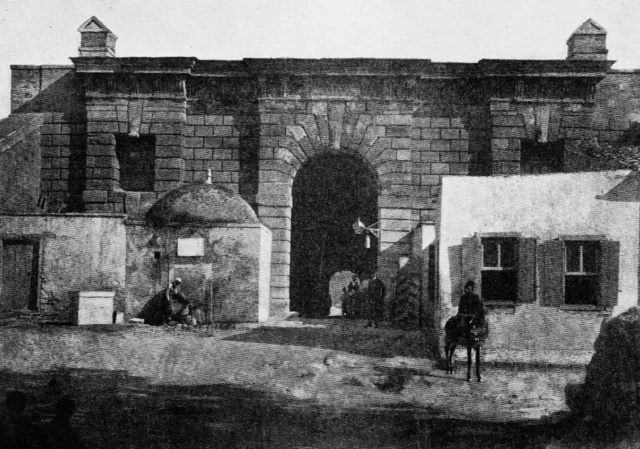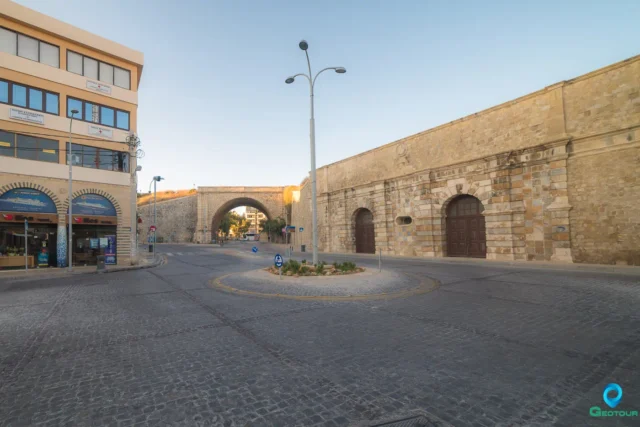415
listings found
Categories
Active filters:
Psalida abandoned village
Psalida (Ψαλίδα), an abandoned village in Gergeri, Crete, offers a glimpse into the island's past. Dating back to the 16th century, the village was once home to farmers, as evidenced by animal feeders found in the ruins. Historical records from 1583 mention Psalida as a dependency of Gergeri with 60 inhabitants. Today, only the stone houses remain, standing as a testament to the traditional way of life. Psalida's location provides stunning views of the surrounding countryside. The village is a reminder of Crete's rich history, including the Greek War of Independence and conflicts between the Christian and Muslim populations.
Agios Pavlos Monastery near Paranymfoi
The Agios Pavlos Monastery is a Venetian-era ruin near Paranymfoi, Crete. Located in the Asterousia Mountains, it once served as a hermitage and monastery. The site features a single-aisled basilica church with traces of frescoes, a carved doorway, and ruins of monks' cells. The monastery, linked to the scholar Iosif Filagris, flourished during the Venetian period but was abandoned in the 20th century. The surrounding area shows signs of inhabitation since antiquity, including possible evidence of an ancient sanctuary. The monastery is accessible by a dirt road from Paranymfoi and is situated above the Porofarago gorge, near the hiking trail to Tries Ekklisies.
Treis Ekklisies, Archanes – Asterousia
Treis Ekklisies (Three Churches) is a small coastal settlement located 64 km south of Heraklion, in the Asterousia Mountains in Crete. The village is named after the three churches of […]
Amigdalos, Archanes – Asterousia
Amigdalos (Αμύγδαλος) is a small mountainous village in the Municipality of Archanes-Asterousia in the Heraklion Regional Unit, Crete, Greece. It is located at an altitude of 595 meters, approximately 50 km south of Heraklion and 37 km south of Epano Archanes. The village was first officially recognized as a settlement in 1925. The name "Amigdalos" means "almond tree" in Greek, likely named after the abundance of wild almond trees in the surrounding region. Amigdalos has experienced a steady population decline throughout the 20th and 21st centuries.
Panorama, Minoas – Pediada
SEO from existing text
Custom Gem
Panorama, formerly Gournia, sits at the foot of Gurniani Korfi hill in Crete, 29.5 kilometers from Heraklion, and offers magnificent views. Records suggest it may have been a Venetian fief, evidenced by a coat of arms in the church of Agios Georgios. During the Ottoman period, it was mainly a Muslim village. After the Asia Minor Disaster, Greek refugees settled there, embracing local customs and focusing on agriculture, especially viticulture. The village has churches like Agios Georgios, Agios Fanourios, and Agia Marina. The name "Gournia" likely came from the small basins at the village spring. Historical accounts mention a Byzantine church, possibly Agios Georgios Styronas. The village relied on agriculture, producing grapes, raisins, olive oil, and cereals. Viticulture remains important to the local economy. "Panorama" was adopted in 1951 due to the village's stunning views. Local legends speak of caves with hidden treasures.
Steironas, Minoas – Pediada
Steironas, located on a hill, 10 km west of Arkalochori, Crete, has a history from the Venetian period, Ottoman rule, and Greek-Turkish population exchange. It's known for the Myragapi Traditional Folklore Rakokazano, showcasing traditional production of wine and tsikoudia, and the late Byzantine church of Panagia with frescoes and an icon of the Virgin Mary.
Mikra Episkopi
Mikra Episkopi is an abandoned village in Crete, Greece. Once known as the seat of the Diocese of Arcadia, it is now deserted with dilapidated houses and overgrown paths. The village is located 7 km southwest of Arkalochori and 1 km north of Partira. Despite its current state, Mikra Episkopi holds historical significance, particularly due to the ruined church of Sotiras Christos (Savior Christ), a Venetian-era structure built upon the remains of an earlier basilica. The church features a cruciform architectural style with a dome and a narthex, with some walls, columns, and capitals still visible. Additionally, the village has the church of Panagia (Virgin Mary) with Venetian-era frescoes and the ruins of the church of Agios Dimitrios (Saint Demetrius).
The population of Mikra Episkopi has dwindled over the centuries, from a mix of Christians and Muslims in the 1800s to becoming completely abandoned in the 1990s. Recent census data shows a slight increase in population, but the village remains largely deserted.
Agioi Apostoloi Church (Holy Apostles), Alagni
Located on Tholoi hill near Alagni, this is a 15th-16th century double-aisled Byzantine church dedicated to Apostles Peter and Paul. It features the Venetian Cornaro family coat of arms and two arcosolia (arched tombs), one externally dated to 1614. Situated near the 16th-17th century Tholoi fortress, it was part of the local defense network. Damaged in the 2021 Arkalochori earthquake, the site, owned by the Monastery of Sinai, is now abandoned and neglected.
The Necropolis of Phourni
The Phourni necropolis, near Archanes, Crete, is a significant Minoan burial site used from the Early Minoan II (EM II) to the Late Minoan IIIC (LM IIIC) periods. It features a variety of tomb types, including tholos tombs, rectangular tombs, and composite tombs, reflecting the evolution of Minoan funerary architecture and burial practices over time. Tholos tombs are beehive-shaped structures used for collective burials, while rectangular tombs resemble houses, suggesting a symbolic connection between the house of the living and the house of the dead. Composite tombs combine elements of both tholos and rectangular tomb architecture.
The necropolis has yielded a wealth of grave goods, including pottery, stone vases, metal objects, jewelry, and figurines, providing insights into the social structures and religious beliefs of the Minoans. The variety of tomb types and grave goods reflects the prosperity and social complexity of the Archanes valley. The architectural features and artistic motifs found at Phourni resonate with those found at Knossos, indicating cultural homogeneity and interaction between these two important centers. The religious beliefs of the Minoans are also reflected in the finds at Phourni, with religious symbols and ritual objects suggesting a belief in an afterlife and elaborate burial rituals.
The Phourni necropolis is the richest burial site in Crete and provides a unique glimpse into the burial practices, social structures, and religious beliefs of the Minoan civilization.
Kato Akria, Gortyna
Kato Akria is a small village in the Ano Akria community, located near Ano Akria and Atsipades. It is the smallest settlement in the municipal district, with a population of […]
Rouma abandoned village near Alagni
Rouma, a deserted village east of Alagni in Crete, takes its name from the Cretan word for "river stream." The village, formerly abundant in oak and pine trees, was abandoned after a plague outbreak. Survivors relocated to Alagni. Despite its abandonment, Rouma is remembered for the church of Panagia tou Roumatou (Virgin Mary of Rouma), a landmark that remains historically and religiously significant. A 1630 census recognized Rouma as a separate village. The restored church of Panagia tou Roumatou is a reminder of Rouma's past, with excavated sacred vessels further highlighting its history.
Karaoula Wine Press near Alagni
A 14th-century, likely pre-Venetian, wine press near Alagni, Crete, at an altitude of 520 meters. The facility illustrates a traditional two-phase winemaking process. Grapes were first crushed by foot in a large press (5.5m×6m) lined with kourasani, with the must collected in an underground tank. The remaining pomace was then pressed using a Galeagra. The stone base of this second press and collection receptacles survive, offering insight into Cretan viticulture and land use.
Agios Georgios (St. George) Gate, Lazaretto
The Agios Georgios Gate, also known as the Lazaretto Gate or Maroula Gate, is a reminder of the size and strategic importance of Heraklion’s Venetian fortifications. Although it was demolished […]
Bethlehem Bastion and Gate
The Bethlehem Bastion and Gate are integral parts of the historic Venetian walls that encircle Heraklion, Crete. Built in the 16th century, these fortifications played a crucial role in the […]
Martinengo Bastion and Makasi Gate
The Martinengo Bastion is a major 16th-century fortification on the Venetian walls of Heraklion, designed to defend against the Ottoman Empire. This bastion is the location of the tomb of author Nikos Kazantzakis. Beneath it lies the Makasi Gate, which during the German occupation in WWII served as a detention center. It is now a Museum of Memory, commemorating events like the Great Blockade of Crete, where prisoners were sent to Mauthausen, and the deportation of Cretan Jews on the ship Tanais.
Jesus Bastion and Gate
16th-century Venetian walls of Heraklion, featuring the Jesus Bastion and Gate, built to protect the city from threats.
Dermata Gate
The Dermata Gate in Heraklion's Venetian walls, a historic passageway built between 1590 and 1595. It served as a secondary access point to the city from the sea.
Pantokrator Bastion and Gate
Pantokrator Bastion and Gate, a prominent feature of the Heraklion Walls. Constructed in the mid-16th century, it played a crucial role in the city's defense.
Stamnoi, Chersonissos
With a history dating back to antiquity with notable features the Church of the Savior Christ and "The Tower" a Venetian-era, two-story building.
Kato Vatheia, Chersonissos
A village in the Vatheianos River valley, this settlement dates back to 1271 and features the Church of Agia Aikaterini.










